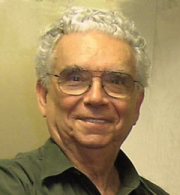 Call for Papers
Call for Papers
The ECS Journal of Solid State Science and Technology is publishing a collection of papers dedicated to the contributions to the field of luminescence by Professor Baldassare (Rino) Di Bartolo.
Professor Di Bartolo recently retired after 50 years with the Department of Physics at Boston College. He was a dedicated teacher, prolific researcher, author of six books, and editor of over 25 volumes. His Optical Interactions in Solids remains a standard reference text in the field of luminescence. He is perhaps best known as the Director of the School of Atomic and Molecular Spectroscopy at the Ettore Majorana Foundation and Centre for Scientific Culture in Erice, Sicily, where he organized 23 summer schools and 11 workshops. The success of these meetings was due to Professor Di Bartolo’s ability to attract top researchers in the field, as well as his warmth, generosity, didactic teaching style, and desire to bring people together to enrich their lives and advance science. His legacy in luminescence continues through the graduate students and researchers trained in his laboratory and Erice schools and workshops.
The field of luminescence is continuously evolving in its scope of applications beyond the traditional use of luminescent materials in lighting and display devices. The areas of such applications involve solar cells, sensors, bio-imaging, plant growth, humancentric lighting, thermometry, laser materials, etc. For these applications, new systems need to be synthesized and their properties optimized for specific applications. In the area of solid state lighting, the search for a novel red-emitting narrowband phosphor still continues. The theoretical investigation of such systems and also of luminescence fundamentals is necessary to explore new materials and to optimize their properties. This focused collection is intended to address recent developments involving these aspects of luminescence in a comprehensive manner.
Topics of interest include:
- Theory, simulation, and machine-learning
- Applied first principles calculations
- Data-driven development of luminescent materials
- Fundamental theory of luminescence
- Novel materials
- Oxynitrides
- Perovskites
- Upconversion materials
- Chemiluminescence
- Glass and ceramics
- QDs
- Applications
- Bio-imaging
- Solar cells
- Thermometry
- Sensors
- Humancentric luminaires
- Plant biology
- LED (blue +UV)
- OLED
- Laser material
The issue is open to all authors interested in submitting review, critical review, perspective, methods, communication, and original research articles.
Accepting Submissions: February 16, 2023 | Submission Deadline: May 17, 2023
Guest Editors
John Collins, Wheaton College, U.S. | jcollins@wheatonma.edu
Tetsuhiko Isobe, Keio University, Japan | isobe@applc.keio.ac.jp
Marco Bettinelli, Università di Verona, Italy | marco.bettinelli@univr.it
Associate Editor
Won Bin Im, Hanyang University, South Korea | imwonbin@hanyang.ac.kr
Technical Editor
Kailash C. Mishra, Osram Sylvania (retired), U.S. | Kailash.Mishra@electrochem.org
Editor-in-Chief
Krishnan Rajeshwar, The University of Texas at Arlington, U.S. | rajeshwar@uta.edu
Articles are published in a standard issue of the journal as they are accepted. If selected at submission, accepted papers are published online in the ECS Digital Library on IOPscience within 24 hours of scheduling for publication. The version of record is published online within approximately 10 days of final acceptance.
Visit the ECS website for author submission instructions and requirements for each article type.
OPEN ACCESS: Authors choosing to publish open access agree to pay an article processing charge (APC) if their papers are accepted. APCs are discounted by 75 percent for ECS members and waived for authors from ECS Plus subscribing institutions. Check if your institution subscribes to ECS Plus. Discounts are applied at the time of payment.


